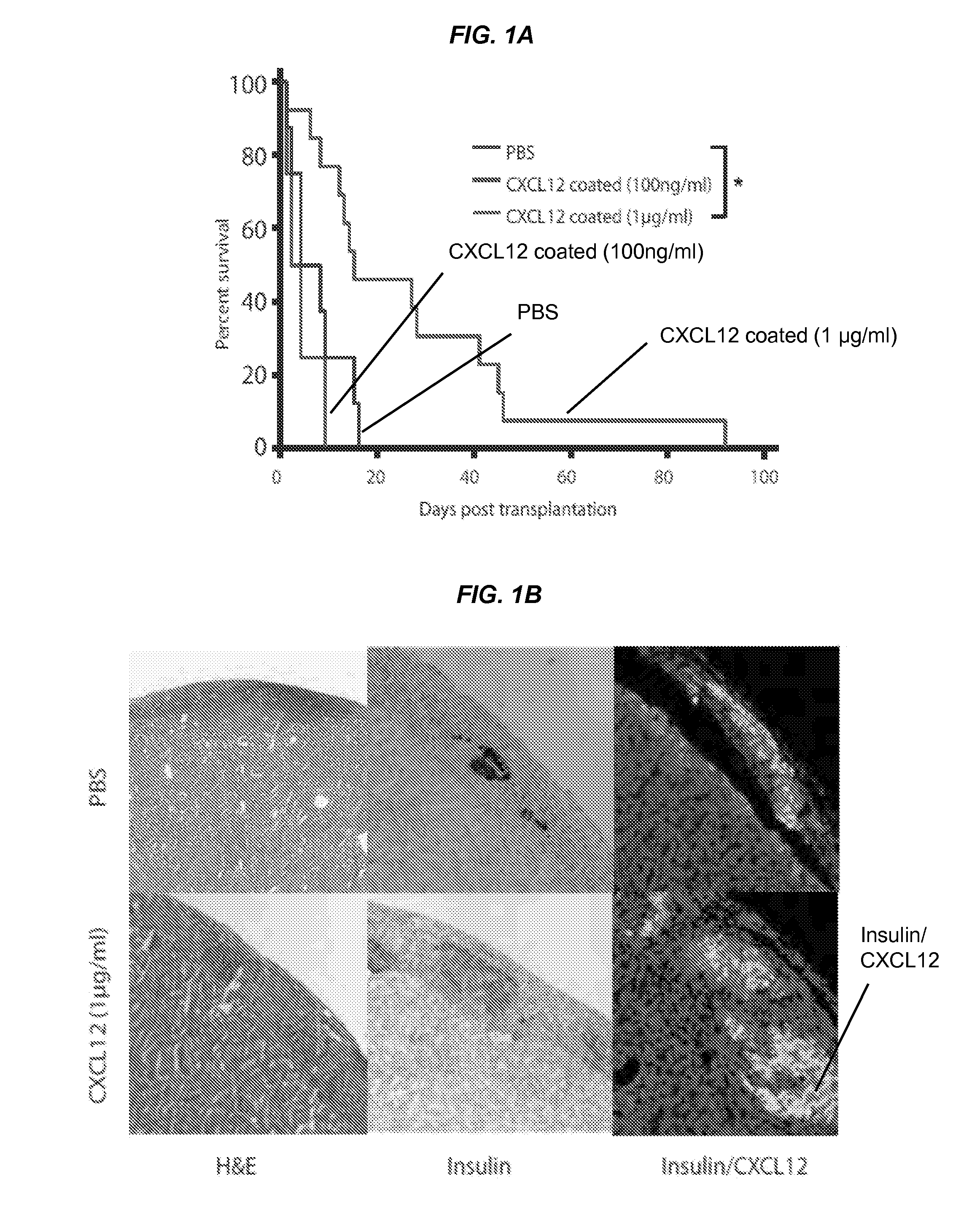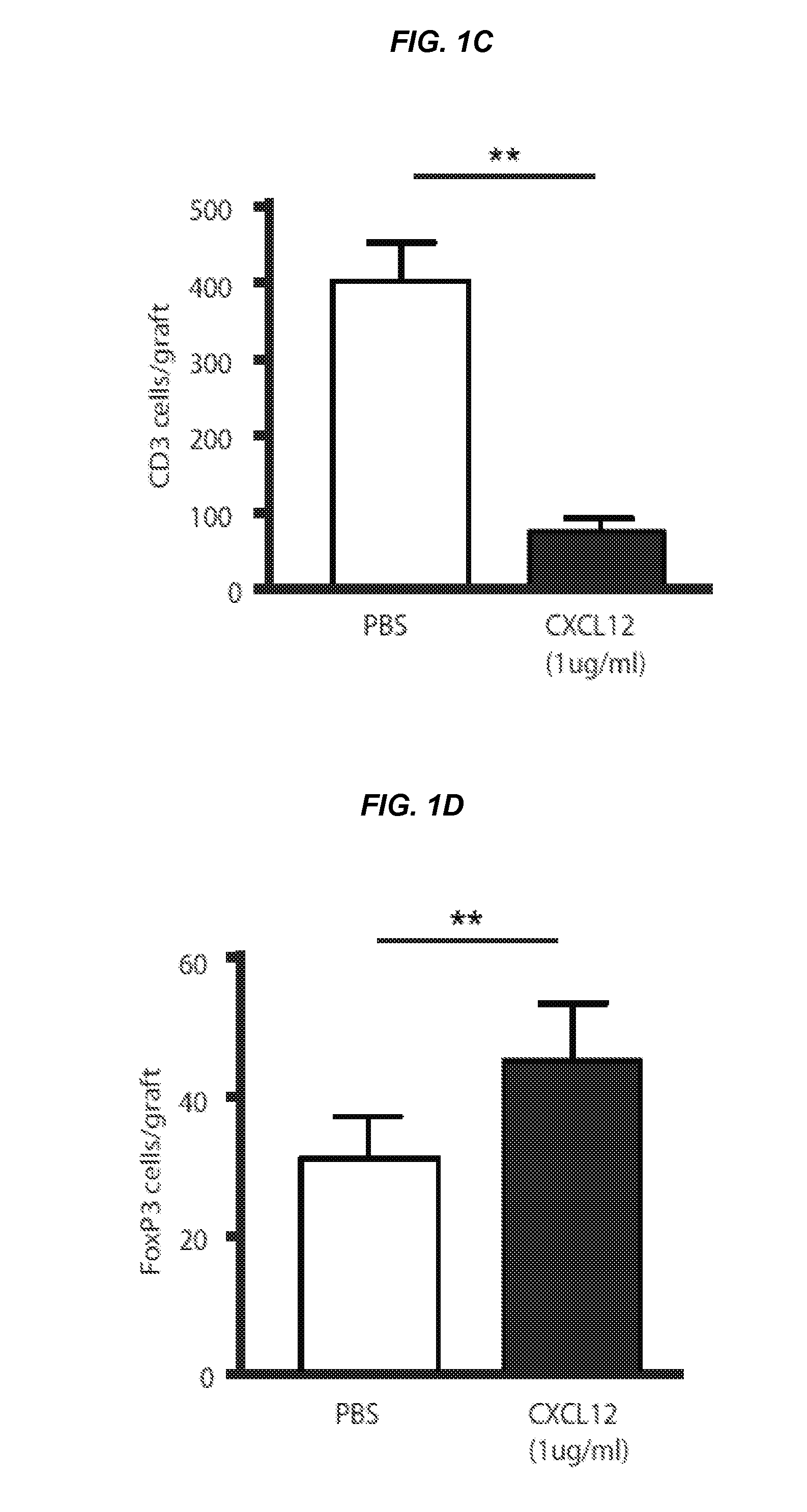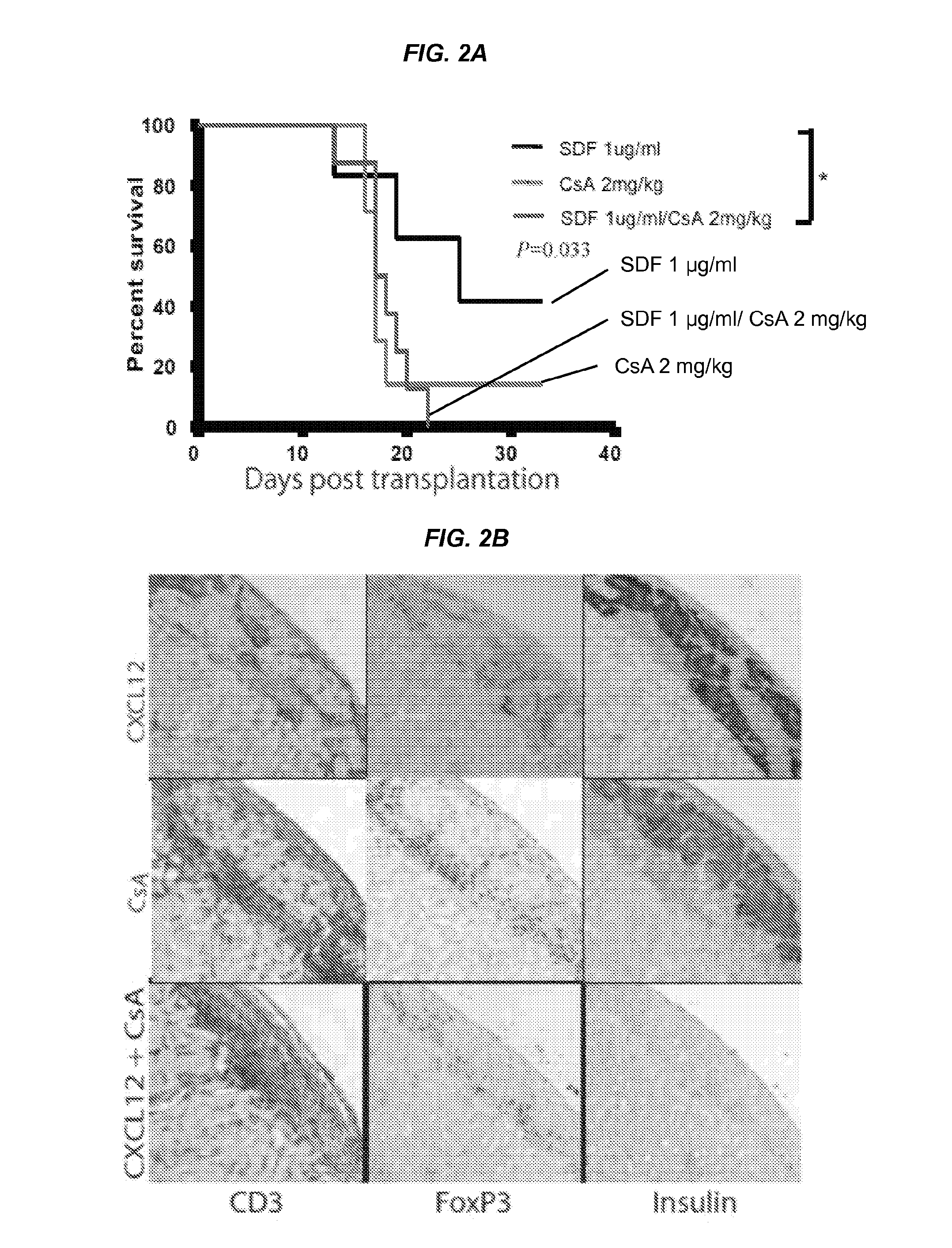Eluting Matrix and Uses Thereof
a technology of eluting matrix and eluting peptide, which is applied in the field of eluting matrix, can solve the problems of limited utility and lack of significant long-term effectiveness
- Summary
- Abstract
- Description
- Claims
- Application Information
AI Technical Summary
Benefits of technology
Problems solved by technology
Method used
Image
Examples
example 1
Direct Coating of Alloislets with CXCL12 Polypeptide
[0091]In this Example, it was sought to determine whether coating alloislets with CXCL12 polypeptides prior to transplantation could result in prolonged islet survival and function as well as accumulation of regulatory T cells (Tregs) at the graft site. The islet capsule generally contains fibronectin, and, without wishing to be bound by theory, CXCL12 can both stably bind to and elute from this matrix protein (15). Accordingly, islets from BALB / C mice were exposed to a buffered solution (e.g., PBS) or coated with CXCL12 at a concentration of about 100 ng / ml or about 1 μg / ml and transplanted under the left kidney capsule of streptozotocin (STZ)-treated diabetic C57BL / 6 mice. Mice were sacrificed at the point when they returned to a diabetic state with two sequential blood glucose recordings of >250 mg / dl. Allogeneic islet grafts coated with CXCL12 at −1 μg / ml resulted in the maintenance of recipient mice in a non-diabetic state for...
example 2
Concurrent Use of CXCL12 Coating and Low Dose Cyclosporine A
[0092]It was next sought to determine whether concurrent use of systemic immunosuppression, for example, in the form of low dose of Cyclosporin A (CsA)(e.g., ˜2 mg / kg) treatment, could enhance CXCL12-coated alloislet survival. While CXCL12 coating alone was shown to prolong alloislet survival compared to PBS-exposed controls in these experiments (p=0.0245), CXCL12 coating in combination with low dose CsA treatment did not appear to extend islet survival and the combination of CXCL12 coating and CsA treatment could result in reduced islet survival in comparison to CXCL12 coating alone (p=0.046) (FIG. 2A). Significant differences in islet survival and between control and experimental groups were shown by 23 days post transplantation. Staining of islet grafts showed heavy infiltration of CD3+ T-cells in CXCL12 coating plus CsA treated animals compared to CXCL12 coating alone (p=0.0002) or CsA treated alone (p=0.0027) (FIGS. 2B...
example 3
Transplantation of CXCL12-Coated Syngeneic Islets in Prediabetic and Diabetic Mouse Model
[0094]To determine whether CXCL12 coating could play a role in reducing or preventing rejection in the context of syngeneic islet transplantation, diabetic NOD / LtJ mice was used. In this model, syngeneic islets from non-diabetic NOD / LtJ mice were transplanted into STZ-treated diabetic NOD / LtJ mice. CXCL12 coating of syngeneic islets led to a significantly longer period of normoglycemia than PBS-exposed islets (FIG. 4A) (p=0.017). Histopathological and immunohistochemical studies showed heavy mononuclear cell infiltration into PBS-treated islets but not CXCL12-coated islets (images not shown). That is, H&E staining showed decreased mononuclear cell infiltration into islet grafts coated with ˜1 μg / ml CXCL12 and immunofluorescent staining for insulin and CXCL12 showed increased levels of both proteins in CXCL12 coated grafts. Staining for CXCL12 and insulin in this experiment showed healthy insulin...
PUM
| Property | Measurement | Unit |
|---|---|---|
| Time | aaaaa | aaaaa |
| Time | aaaaa | aaaaa |
| Time | aaaaa | aaaaa |
Abstract
Description
Claims
Application Information
 Login to View More
Login to View More - R&D
- Intellectual Property
- Life Sciences
- Materials
- Tech Scout
- Unparalleled Data Quality
- Higher Quality Content
- 60% Fewer Hallucinations
Browse by: Latest US Patents, China's latest patents, Technical Efficacy Thesaurus, Application Domain, Technology Topic, Popular Technical Reports.
© 2025 PatSnap. All rights reserved.Legal|Privacy policy|Modern Slavery Act Transparency Statement|Sitemap|About US| Contact US: help@patsnap.com



